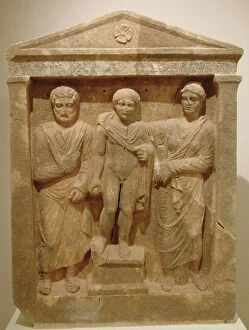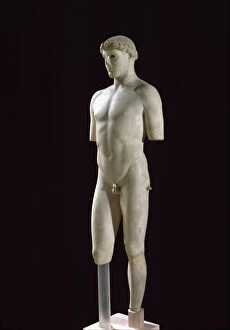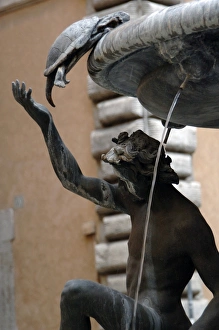Ephebe Collection
The captivating world of "ephebe" comes to life in the Funerary stele of Paramonos, a mesmerizing artifact from ancient Greece
All Professionally Made to Order for Quick Shipping
The captivating world of "ephebe" comes to life in the Funerary stele of Paramonos, a mesmerizing artifact from ancient Greece. The intricate details on this piece transport us back in time, showcasing the beauty and significance of youth. In the central hall adorned with frescoes by Domenico and Giuseppe Valeriani, we are greeted by winged ephebes that seem to take flight before our eyes. Their ethereal presence adds an enchanting touch to the artwork, capturing the essence of youthful energy and freedom. As we delve deeper into this artistic realm, we encounter another masterpiece by Antonio Allegri Da Correggio. His fresco depicting an adolescent figure in Parma Cathedral's dome showcases the transition from boyhood to manhood with grace and elegance. It serves as a reminder that adolescence is a pivotal stage filled with growth and self-discovery. The balcony scene painted by Allegri further emphasizes this theme, presenting youths engaging in lively conversations while overlooking their surroundings. This depiction reminds us of the camaraderie shared among young individuals during their formative years. Moving on to Assumption of Virgin, another work by Allegri, we witness ephebes alongside apostles paying homage to divine forces. This juxtaposition highlights both earthly desires and spiritual devotion within these young souls. Returning once again to Valeriani's frescoes, we find puttos accompanied by ephebes amidst flower pots – a delightful combination symbolizing beauty and vitality intertwined with nature's wonders. These elements create a harmonious atmosphere that celebrates youthfulness at its finest. Through these various artworks featuring ephebes across different mediums – from funerary steles to cathedral domes – one thing becomes clear: they serve as timeless reminders of youth's vibrancy and potential for greatness. Whether depicted through wings or balconies or even flower pots, these figures embody the spirit of adolescence throughout history.










